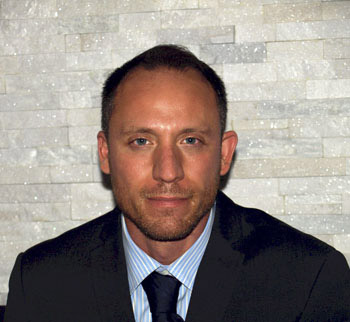TORONTO — Teacher Jimmy Bitton says he hopes a Grade 10 program he conceived will help raise awareness among his students in Toronto’s Ashkenazi-dominated Jewish community about Sephardi history and culture.
Grade 10 students at the Anne and Max Tanenbaum Community Hebrew Academy of Toronto’s Kimel Family Education Centre in Vaughan, where Bitton is the history department head, will take part in a field trip on Jan. 8 that’s meant to highlight the fact that the Sephardi experience is part of the larger Jewish experience.
“The program has two functions – one is curricular and one is to complement the philosophy of the school,” said Bitton, a Sephardi Jew.
He added that TanenbaumCHAT values “a transmission and appreciation of Jewish religious and cultural traditions,” and is “welcoming of students and families of diverse Jewish traditions. In order to be welcoming, we have to represent these communities.”
The field trip consists of tours of two synagogues – Petah Tikvah Anshe Castilla Congregation, which was Ontario’s first Sephardi synagogue, founded in 1958, and the Sephardic Kehila Centre (SKC), which is architecturally modelled after a Spanish synagogue.
“There, they will be greeted by members of the community and given lectures on the community, Sephardic history, giving them a taste of liturgy, giving them a taste of the architecture, to see that Jews lived in the Muslim world, the Arab world and developed a unique culture, [in the same way] as the Ashkenazim developed in Europe,” Bitton said.
Among the community leaders the students will hear from are Rabbi Amram Assayag, SKC’s chief rabbi; Max Benaim, former SKC and Petah Tikvah president; and Yehuda Azoulay, the founder of the Sephardic Legacy Series Institute, an organization that provides English-speaking Sephardim with the resources to explore their rich culture and history.
After the field trip to the two synagogues, the students will come back to the school for a Sephardi-themed festival “that will include music, henna, couscous and things like that.”
Although the trip is scheduled for Jan. 8, the program will run for the entire week.
“Sephardi music will be played through the PA during the morning and lunch periods. The library will display Sephardi books, and so on,” he said.
“Beyond that, the classroom will be a place where we can integrate and pull together what we’ve done with the curriculum, so the students see that connection and solidify the point… We are learning about Jews in the Muslim world and Muslim Spain… and how a culture develops from that symbiosis that existed between Jews and Arabs.”
Bitton said that although there are no figures regarding the number of Sephardi Jews at the school, “a significant number of my students definitely are.”
But the program is not intended primarily for the Sephardi students.
“Because we live in – in terms of demographics – an Ashkenazi-dominated society, they tend not to hear about these kinds of things,” he said.
The program is “intended for everyone else. That’s really the target audience from my perspective. It’s to bring this world that they may not know to them.”
As a member of the Sephardi community, Bitton said it was important for him to have “some representation for the Sephardic community at the school and also to make sure that the rest of the community understands that this is part and parcel of the Jewish experience.
“Just as lox and cream cheese may be considered Jewish food, by the same token, there are other foods from the Sephardic community that are Jewish food,” he said.
“I think at our school, there is definitely a representation of Sephardi history, but I think it needs to be highlighted to a greater extent.”
